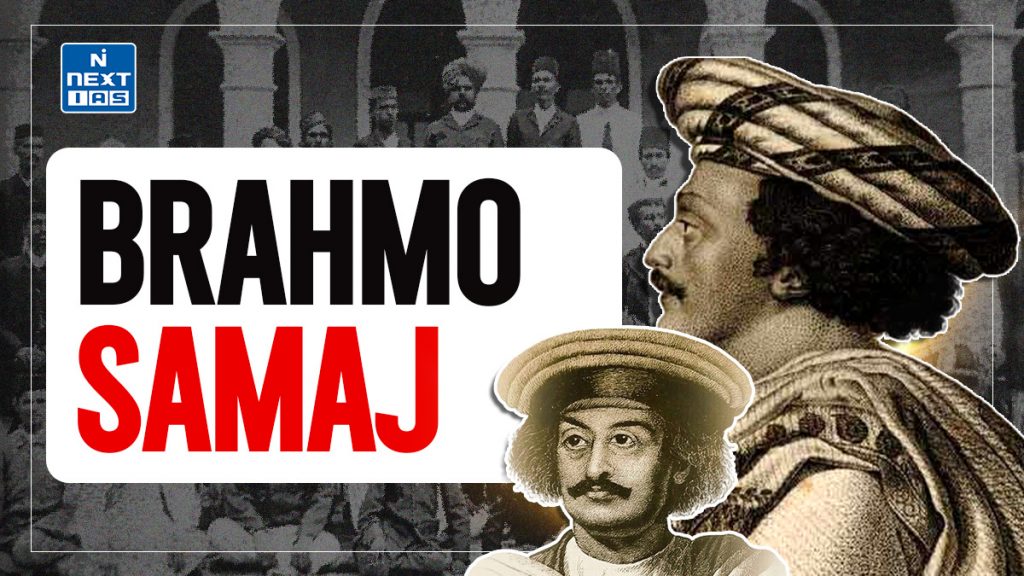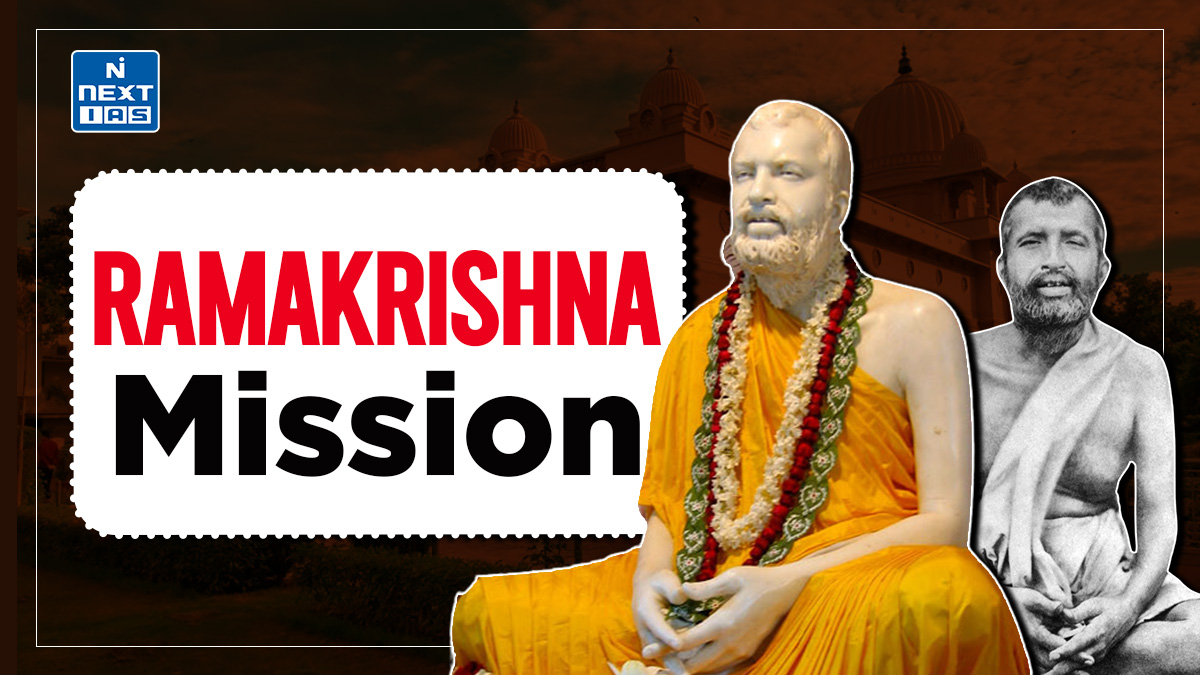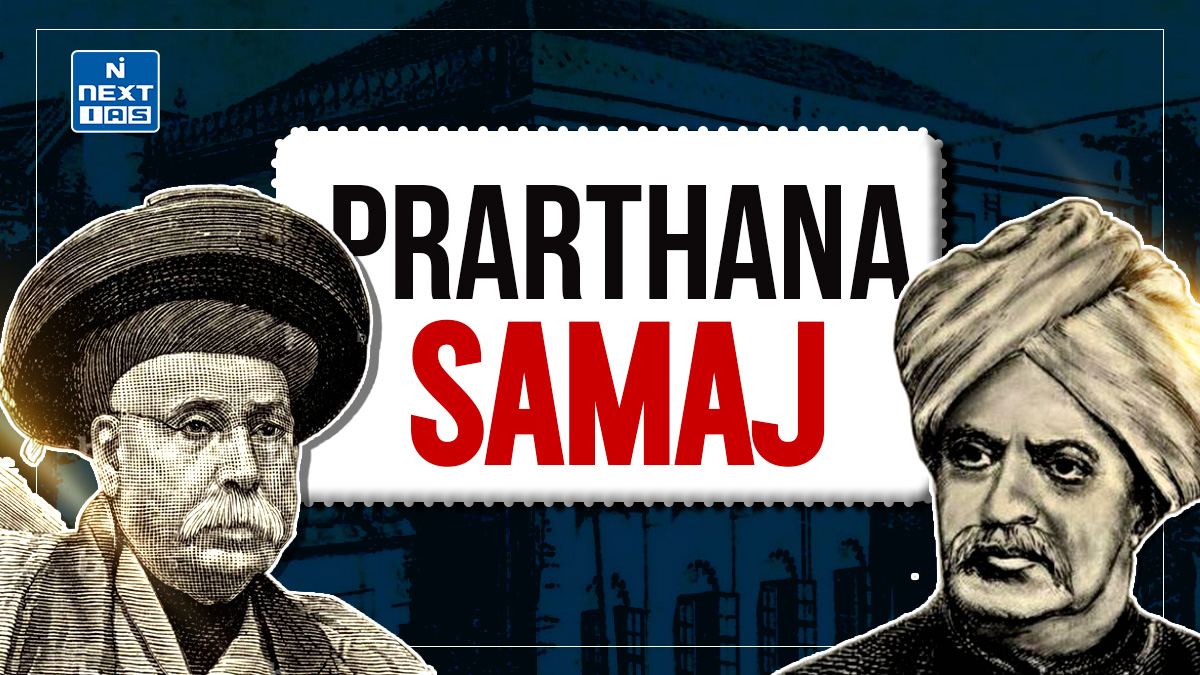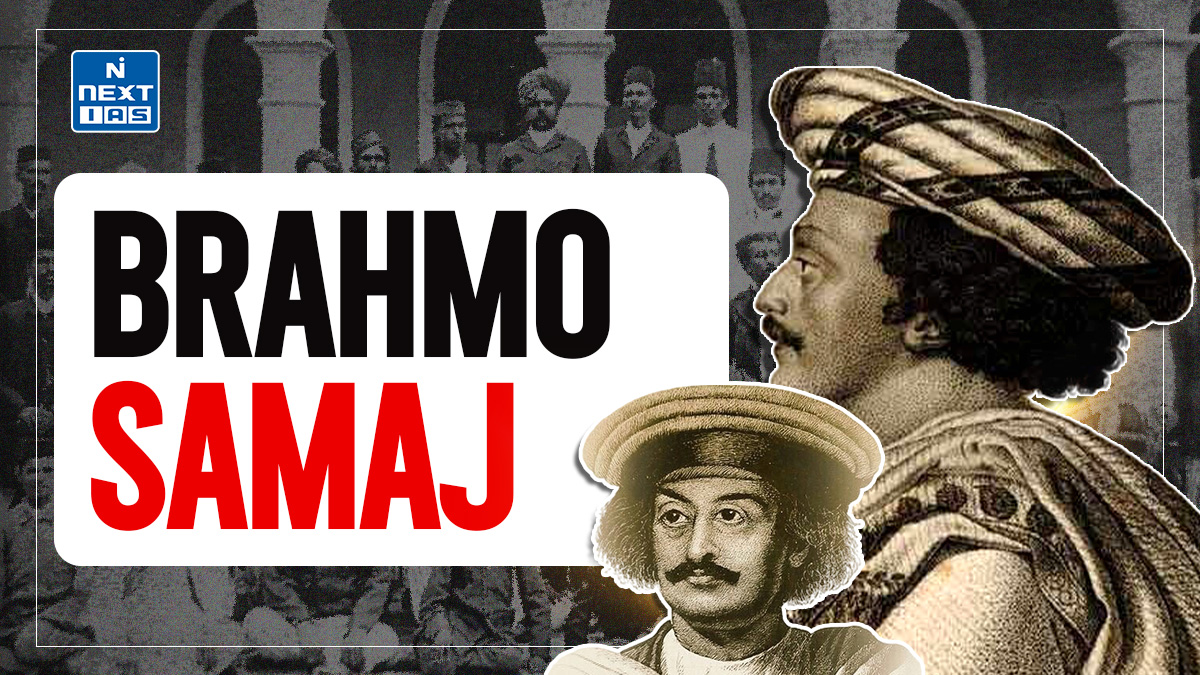
The Brahmo Samaj was a prominent socio-religious reform movement founded by Raja Rammohan Roy in 1828. It aimed to purify Hinduism and promote rationalism. Its significance lies in challenging age-old practices and laying the foundation for modern Indian society and reform movements. This article aims to study in detail the origins, objectives, and legacy of the Brahmo Samaj, along with its contributions to Indian society.
About Brahmo Samaj
- In the nineteenth century, many individuals and several organisations took an active role in the social reform movement.
- However, the story of the Indian social reform movement practically began with Raja Rammohan Roy (1774-1833).
- The advent of Raja Rammohan Roy (father of the Indian Renaissance) marks the line of demarcation between the Dark Middle Ages and the modern age of ‘enlightenment’.
- In 1815, Rammohan Roy formed ‘Atmiya Sabha’ (Association of Friends), an association for religious discussions. In 1828, he formed ‘Brahmo Sabha’, later becoming famous as ‘Brahmo Samaj’.
- This Brahmo Samaj movement is the most remarkable aspect of the nineteenth-century Indian awakening and reform.
- It was formed to reform and purify the Hindu religion. Through the Samaj, Roy emphasised rationalism and a modern scientific approach.
- Raja Ram Mohan Roy is India’s ‘First Modern Man’.
- Raja was awarded to Ram Mohan Roy by the then Mughal Emperor Akbar-II in 1831.
- The Calcutta Unitarian Committee was established by Raja Ram Mohan Roy, Dwarkanath Tagore and William Adam.
- Raja Ram Mohan Roy strongly opposed the Jury Act of 1826.
Founder of Brahmo Samaj
- The Brahmo Samaj was founded by Raja Ram Mohan Roy in 1828 in Calcutta, marking the beginning of India’s modern socio-religious reform movements.
- Raja Ram Mohan Roy sought to promote monotheism and eliminate social evils like sati, caste discrimination, and child marriage.
- Influenced by Upanishadic teachings and modern rationalism, he advocated for women’s rights, education, and the abolition of idol worship and ritualistic practices. His efforts laid the foundation for a progressive society while challenging orthodox Hindu traditions and colonial prejudices.
Programmes and Objectives of Brahmo Samaj
The programmes and objectives of Brahmo Samaj are:
- It began the process of reformation of Hinduism. It objected to the futile and illogical practices of the time, like sati, early marriage, purdah, untouchability, etc.
- It criticised the caste system.
- It denied the need for a priestly class to perform the rituals and condemned untouchability.
- The Samaj worked to uplift women. Raja Ram Mohan Roy was instrumental in legalising the prohibition of Sati.
- He translated Vedas and Upanishads into Bengali.
- He wrote “Gift to Monotheism” in 1809 in Persian and “Precepts of Jesus” in 1820.
- The Samaj campaigned against idolatry and polytheism. It advocated monotheism, was based on the teachings of the Vedas and Upanishads, and denounced avatars (incarnations).
- The Samaj tried to disseminate the benefits of both Indian and Western education.
- It had no opinion on the doctrine of Karma and transmigration.
- It attacked many dogmas and superstitions.
- It also tried to incorporate the teachings of other religions.
Maharishi Debendranath Tagore
- Maharishi Debendranath Tagore founded the Tatvabodhini Sabha in 1839. This organisation had a rationalist outlook and studied Indian tradition systematically.
- Tagore joined the Brahmo Samaj in 1843. It has been rightly said that if Rammohan laid the foundation stone of Brahmoism, Debendranath, its architect, first raised an impressive structure upon it.
- Rammohan Roy denounced the belief in polytheism, but he never questioned the Vedas’ authority and considered them infallible.
- But Debendranath denied the infallibility of the Vedas and gave the Brahmo Samaj a distinctly sectarian character. Debendranath relied on the Upanishads.
- After 1843, ‘Tattvabodhini Sabha’ became the main organisational wing of the Samaj. Later, it merged into Brahmo Samaj.
- In August 1843, he started the ‘Tattvabodhini Patrika’, a Bengali monthly, to popularise the ideals of Brahmo Samaj.
- In August 1861, he started the ‘Indian Mirror’, the first English daily journal with Keshub Chandra Sen as its editor.
- Under Tagore’s influence, many youths joined the Brahmo movement. However, it became an all-India movement under the leadership of Keshub Chandra Sen.
Keshub Chandra Sen
- Keshub Chandra Sen gave a new dimension to the Brahmo Samaj. He introduced radical ideas into the movement.
- He wanted Brahmo Samaj to be universal in nature by including teachers from all religions and supporting inter-caste marriages.
- He established Sangat Sabha for discussing religious and moral questions.
- He supported radical reforms, which the elder section of the Samaj did not like. The younger section also opposed wearing Brahmanical thread.
- Debendranath Tagore was not against social reforms, but he and his followers wanted to keep social life out of the purview of religious life.
- All these led to an open conflict between the older and the younger sections, and as a result of such conflict, Keshub Chandra Sen broke away from the original Brahmo Samaj in 1866.
- He formed a new organisation called ‘the Brahmo Samaj of India’ or ‘Bharatiya Brahmo Samaj’.
- The original organisation, henceforth known as the Adi Brahmo Samaj, quietly followed the pure monotheistic form of Hinduism.
- Shortly after the division of the Samaj, Debendranath Tagore retired from active participation in the work of the Adi Brahmo Samaj, and Rajnarayan Bose became its president.
- But, despite the tremendous personal effort of its leader, it soon went into oblivion. In 1911, Rabindranath Tagore, son of Debendranath Tagore, took over the leadership of the Adi Brahmo Samaj.
- Under the influence of Rabindranath, Adi Brahmo Samaj was showing signs of revival.
- The new organisation of Keshub Chandra Sen adopted radical reforms such as the abolition of Purdah, caste system, child- marriage, and polygamy, encouraging widow remarriage and inter-caste marriage.
- Keshub Chandra realises that unless the difference between the classes and masses, between the high castes and low castes, between the various creeds are eliminated, no national unity is possible, and consequently, no solution to problems is possible.
- He was also a pioneer in starting the Depressed Class movement, which was the precursor of the Harijan Movement of M.K. Gandhi. Indian Reform Association was formed in 1870 by Keshav Chandra Sen.
Adi Brahmo Samaj & Sadharan Brahmo Samaj
- The Adi Brahmo Samaj and Sadharan Brahmo Samaj emerged due to divisions within the Brahmo Samaj movement, founded by Raja Ram Mohan Roy.
- The Adi Brahmo Samaj was established in 1866 under Debendranath Tagore, emphasising a more conservative approach and focusing on the original principles of monotheism and social reform without radical change.
- In contrast, the Sadharan Brahmo Samaj was formed in 1878 by Keshab Chandra Sen and his followers, advocating a more inclusive and democratic framework, opening membership to all regardless of caste or creed, and promoting progressive reforms like women’s rights and education.
- Both factions contributed significantly to India’s social and religious reform movements.
Analysis of Brahmo Samaj
- By the end of the nineteenth century, the Brahmo Samaj slowly flickered into oblivion due to internal dissensions, a lack of leaders, and mass participation.
- However, whatever time the Brahmo Samaj was present, it had a great influence on Bengal’s socio-religious, cultural, and political life.
- It leads the first organised movement against the evil practices of Hindu society and religion and paves the way for other movements.
- Along with Western education, it highlighted derogatory social practices and introduced modern rationalist ideas to the people.
- Although its work proved seminal, its success and reach were limited in extent. The movement was limited to the urban educated group.
- It was too radical for a society with mass illiteracy and ignorance. Brahmo Samaj’s main drawback is that it could not break the walls of conservation and communicate its ideologies to the common people.
Conclusion
Despite facing challenges and ultimately losing its influence by the late 19th century, Brahmo Samaj’s impact on India’s socio-religious and cultural spheres was profound. It paved the way for future reforms and inspired generations to embrace modern education, rational thought, and social equality. Although limited in reach, Brahmo Samaj remains a cornerstone in India’s reformist history.
Frequently Asked Questions (FAQs)
Who founded Brahmo Samaj and why?
Brahmo Samaj was founded by Raja Ram Mohan Roy in 1828 to promote monotheism, eradicate social evils like sati and caste discrimination, and encourage rational thinking and social reform in Indian society.
What was the main aim of Brahmo Samaj?
The main aim of Brahmo Samaj was to reform and modernize Hindu society by abolishing practices like idol worship, caste distinctions, and superstitions, while advocating for universal worship of a single God and promoting education and equality.





